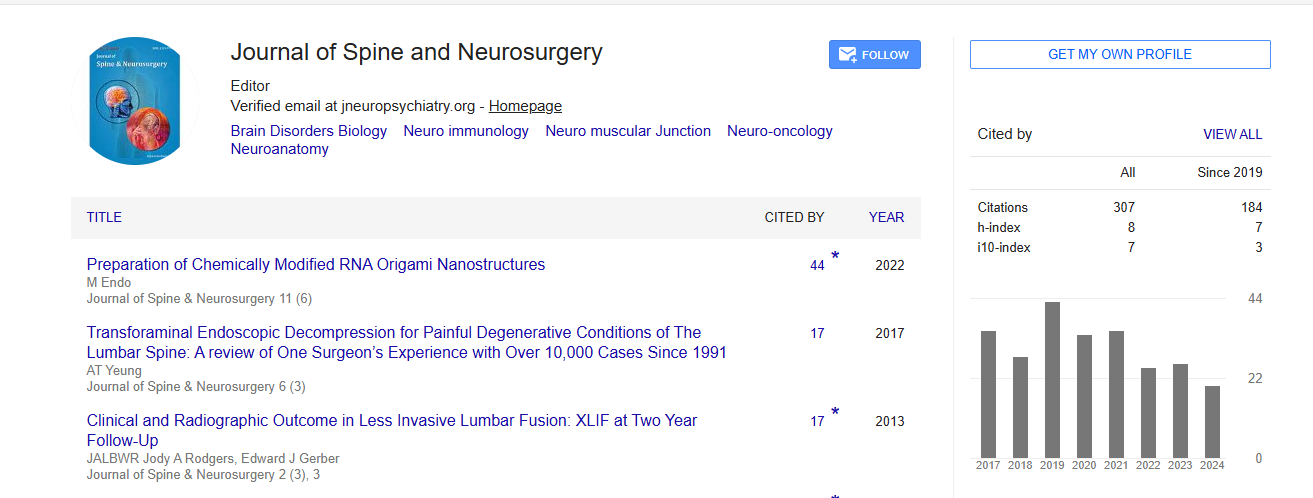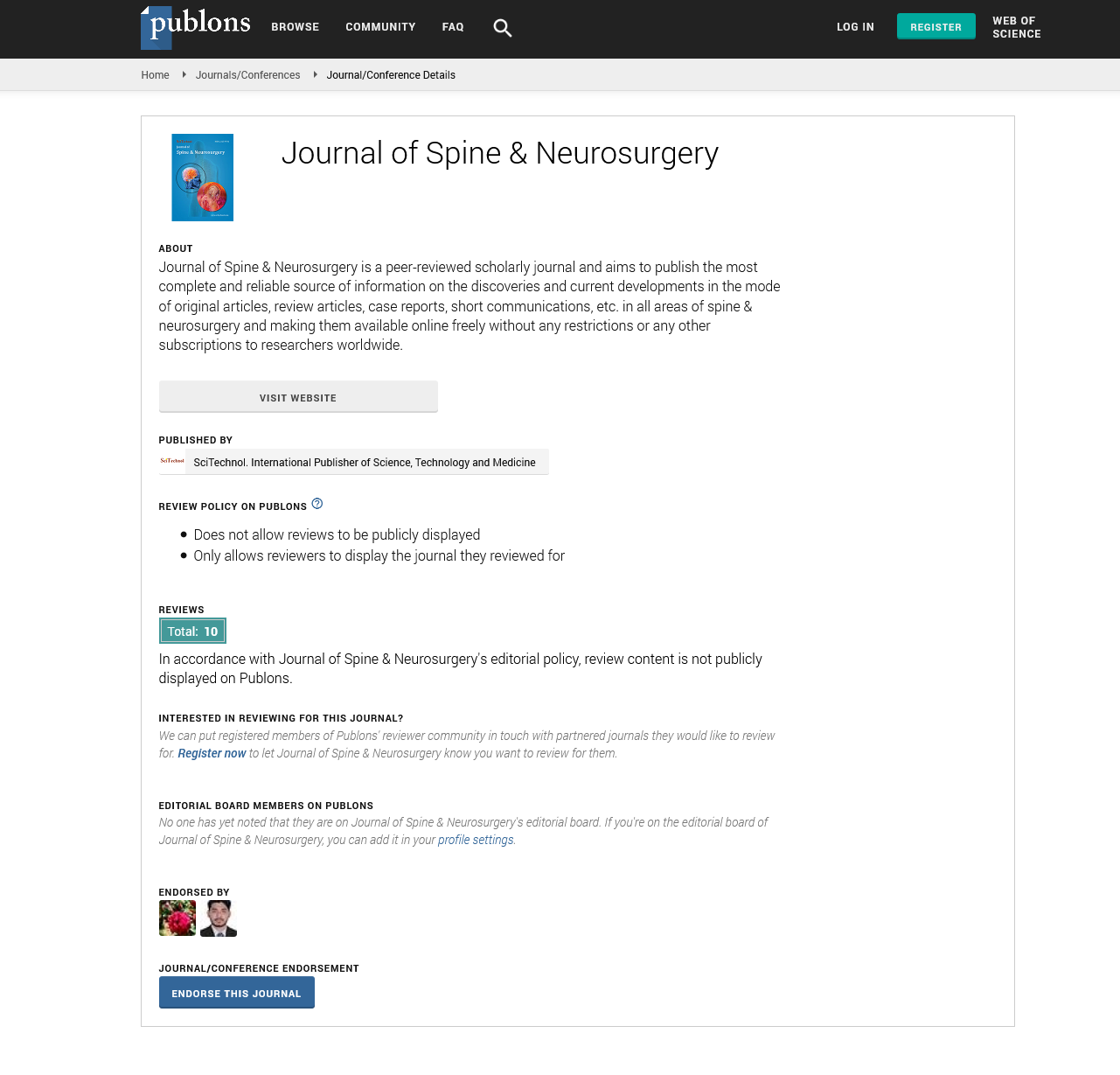Penetrating brain injury in a young patient: The mystery revealed
Ravi Ichalakaranji
KLE Dr. Prabhakar medical hospital, India
: J Spine Neurosurg
Abstract
Penetrating Brain Injury (PBI) is a Traumatic Brain Injury (TBI) caused by low-velocity sharp objects (e.g., a knife) or highvelocity projectiles (shell fragment or bullets); PBI, though less prevalent than closed head trauma, carries a worse prognosis. Based on current evidence, computed tomography scanning will be helpful as the neuro-radiologic modality of choice for PBI patients. Cerebral angiography is recommended in patients with PBI, where there is a high suspicion of vascular injury. It is still controversial whether craniectomy or craniotomy is the best approach in PBI patients. The present recommendation for management of civilian penetrating brain injuries is craniotomy and debridement of the skull with replacement of the bone to avoid the future need for cranioplasty. A 26 years male patient was brought to our casualty with history of fall from 10 feet height over the building pillar at construction site with two iron rods piercing the head and neck separately. The incident took place at around 10 AM and was brought to our casualty at 11 AM. Patient had history of one episode of vomiting and drowsiness since then with left hemiparesis. On examination patient was conscious, drowsy, obeyed commands with GCS E3V4M6 with left hemiplegia with power 0/5 in left upper and lower limb. Pupils left 3 mm reactive to light and right eye ptosis with 4 mm non-reactive to light with slight proptosis. Vitals PR -96 bpm, BP-110/70 mmHg, bilateral carotids and radial arteries well felt. On local examination there were two iron rods: (1) One entering the inferior part of right lower eyelid below the infra-orbital margin and exiting through the right parietal region with no active bleeding seen over entry and exit points and (2) Second rod seen over the mid-zone of the left side of the neck with entry point lateral to the anterior border of ipsilateral sternocleidomastoid and exiting over the ipsilateral trapezius muscle. Patient was stabilized with IV fluids, NSAIDS, anto-edema measures and later shifted for imaging. CT brain with brain and neck angiography was done which showed carotids and jugular vein intact. Patient was subjected for emergency surgery and under aseptic precautions rods were retrieved after trauma flap elevation and neck exploration. Adequate wound debridement with removal of the fractured bone fragment was done followed by wound closure. Patient was put on adequate IV antibiotics, anti-epileptics and anti-edema drugs with steroids for optic nerve involvement. Postoperatively patient recovered well with GCS 15/15, left hemiparesis, with decreased vision in right eye with restricted ocular movements, with no signs of meningitis, CSF leak. Patient is on regular follow up with improvement in left side power.
Biography
Ravi Ichalakaranji is a Resident of General Surgery in BLDE Shri B.M. Patil Medical College and Research Centre at Bijapur. He has been working as an Assistant Professor and as a Consultant at KLE Dr. Prabhakar Medical Hospital at Belgaum. He has published his articles in various journals. He is the Member of Association of Surgeons of India and the Member of Neurological Society of India.
E-mail: ravi.ichalkaranji@gmail.com
 Spanish
Spanish  Chinese
Chinese  Russian
Russian  German
German  French
French  Japanese
Japanese  Portuguese
Portuguese  Hindi
Hindi 
